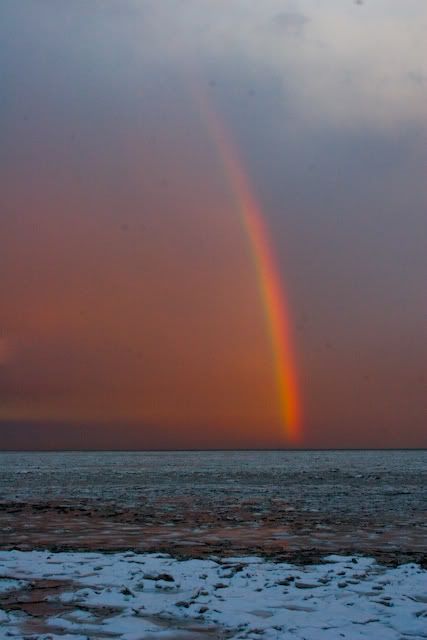As the Arctic climate changes, the possibility of an ice-free Arctic Ocean is looming. In recent history, almost all of the Arctic Ocean is covered by sea ice in winter, and perennial ice persists throughout the year over much of the basin. Arctic sea ice is now reducing in both volume and coverage. Some predictions, including the National Oceanic and Atmospheric Administration (NOAA), suggest that based on observed 2007/2008 summer sea ice extents,
the Arctic could be nearly sea ice free in summertime within 30 years.
 |
| Rainbow over Canada's icy St. Lawrence River near Petite-Riviere-Saint-Francois, Quebec. |
Setting aside the root causes of these changes, Arctic nations are preparing for a less icy future. Many stakeholders, like US Senator Lisa Murkowski of Alaska, believe that
reduced ice cover over the Arctic could lead to future subsea resource discoveries. Indeed, the Arctic sea floor is already known to be home
to abundant energy resources including petroleum, natural gas, as well as metal and mineral deposits. In addition, the ocean and sea bed are home to significant marine life.
Beyond opening up potential for underwater resource extraction, a reduction in ice cover could also open up
commercial navigation across the fabled Northwest Passage or other routes. This could reduce the cost of shipping goods across the globe, but could significantly increase marine traffic in the Arctic Ocean.
Arctic nations are gearing up for this possible future. For example,
Canada has ordered new icebreakers and offshore patrol boats, and the head of the Royal Canadian Navy has recommended increasing military staffing in the region.
What will the future hold for the Arctic? Will perennial ice cover be significantly reduced within decades? If so, what will it mean for the environments, economies, and national security interests of countries in the Arctic region?



No comments:
Post a Comment